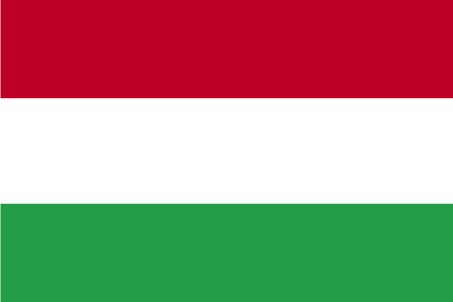Login form
Customs of Hungary
 Marriage and Family
Marriage and Family
Most people wait until they have completed their education or are working before they marry. Newlyweds in urban areas tend to be older than those in rural areas. Traditional weddings were very large three-day affairs, but these are rare today. Still, the ceremony is often followed by an elaborate dinner. Adult children often live with their parents at least until marriage; due to a shortage of housing, some young couples continue to live with their parents for the first few years of marriage.
The father maintains a dominant role in the family. Both parents usually work. Men share some household responsibilities, but traditionally do the “outside” chores, such as gardening. Aging parents are generally cared for by their children.
Eating
Hungarian cuisine has been influenced by that of neighboring countries. One of the best-known Hungarian specialties is gulyás (goulash), a stew of meat, potatoes, onions, and paprika (a type of pepper that is often used in Hungarian cooking and is sometimes served stuffed). Soups, including halászlé (fish soup), figure prominently in the diet. Pork is the most common meat, but beef and chicken are also popular. Side dishes include noodles, potatoes, and dumplings. A cabbage and vinegar salad is popular. Vegetables and fruits are in ample supply year-round. Hungarians also eat strudels (filled pastries), pancakes, and a wide variety of breads and pastries.
Breakfast may be a light meal with only rolls and coffee or tea, or it may be heartier and include eggs, salami, cheese, yogurt, and sometimes hot peppers. In rural areas lunch is often the main meal, including soup, sometimes salad, a main dish of meat and potatoes, and dessert with coffee. The lighter evening meal generally consists of cold cuts of meat, fruit, bread or rolls, and a drink. In urban areas, however, lunch tends to be light and dinner is the main meal.
Hands are kept above the table, but elbows do not rest on it. It is considered impolite to leave food on the plate. Although tap water is safe to drink, many people prefer bottled mineral water or some other beverage.
Socializing
Adults commonly greet each other with a firm handshake. Close women friends may hug and kiss each other on the cheek. The usual greetings include Jó napot kivánok (“Good day”), Jó reggelt kivánok (“Good morning”), and Jó estét kivánok (“Good evening”). The kivánok is often left off in more casual circumstances or is replaced by a person’s name. Children might greet women with Kezét Csókolom (“I kiss your hand”). Men may also use this when greeting women to show special respect. Popular informal greetings include Szervusz or Szia, which mean “See you.” One might follow a greeting with Hogy vagy? (“How are you?”) or another question. It is polite to use titles (“Doctor,” “Professor,” “Director”) with a person’s family name. People often introduce themselves by their family name first, sometimes followed by the first name. Greetings on a first-name basis are usually limited to close friends and relatives. However, adults address young people by their first names, and young people address each other by first name. When parting, Hungarians say Viszontlátásra (“See you again”) or simply Viszlát.
Most visits are prearranged, but close friends, relatives, and neighbors may drop in on each other unannounced. Relatives visit one another often. First-time visits by new acquaintances are usually short, ending just after coffee is finished. Most weeknight visits end by 11 pm (sometimes earlier in rural areas) because of early working hours. An informal atmosphere prevails during these visits. Although Hungarians enjoy socializing in the home, they also get together frequently at restaurants, coffeehouses, and tearooms, often for an afternoon tea or ice cream.
Recreation
The most popular sport is soccer, but Hungarians also enjoy swimming, tennis, fencing, sailing, riding, hunting, and fishing. In their leisure time, many Hungarians like walking, visiting parks or local museums, going to concerts, watching television, or gardening. For vacations, many enjoy resort spas and baths. For longer vacations, families often go to
Holidays and Celebrations
Public holidays begin with New Year’s Day (1 January). War of Freedom Day, on 15 March, marks the 1848 rebellion and war. Christians celebrate both Easter Sunday and Monday; on Easter Monday, boys traditionally sprinkled girls with water or cologne as a sign that girls are flowers that should not fade. In return, girls were supposed to give the boys elaborately painted Easter eggs. Labor Day (1 May) and Pentecost are also holidays. Saint Mark’s Day (25 April) is also called “The Blessing of the Wheat” (Buza Szentelo). On this day a priest blesses the wheat fields of his parish in a ceremony, and his parishioners will take sprigs of the blessed wheat home with them.
Saint Stephen’s Day (20 August) celebrates the harvest and honors the first king of
Source: Encarta Interactive World Atlas

